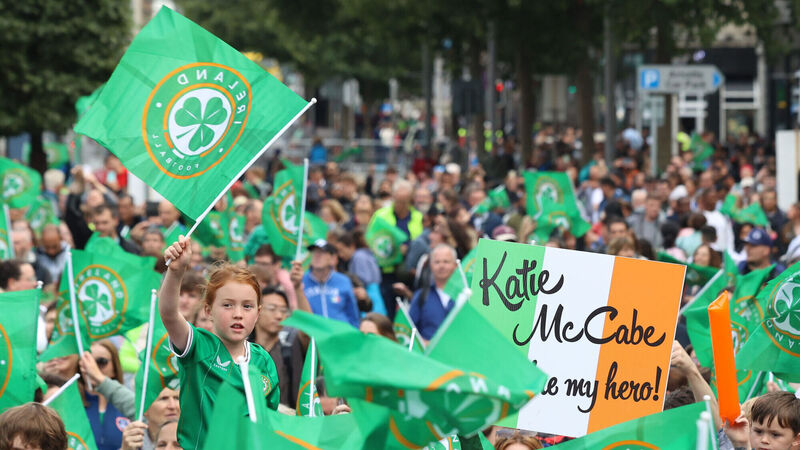TV viewership for women's sport still far behind men's despite surge in popularity, CSO finds

More than half a million people tuned in for Ireland Women’s World Cup opener against Australia, which is higher than the CSO’s data for average viewership on a Six Nations men’s game of 434,000. File picture: Damien Eagers/PA
The number of television viewers for men’s sports is “far greater” than for viewers of women’s sports, the Central Statistics Office has said, despite a surge in popularity in women’s sports in recent years.
Data suggests that the average men’s Six Nations game pulls eight times the viewers of the women’s Six Nations.
The gap is far less pronounced in other sports, with women’s soccer Nations League games pulling in around 40% of the same viewership of the men’s Nations League while the All-Ireland Camogie Final gets around 30% of the viewers that the All-Ireland Hurling Final does.
It comes as the Government is seeking to expand the number of female sporting events that would be available on free-to-air TV, as part of its commitment to increase the visibility of women’s sport.
It also comes after viewership figures for the women’s soccer World Cup spiked last year, as Ireland’s women qualified for the first time.
More than half a million people tuned in for Ireland Women’s World Cup opener against Australia, which is higher than the CSO’s data for average viewership on a Six Nations men’s game of 434,000.
In terms of watching sports, only the basketball national cup finals had anything approaching gender parity, with an average of 24,400 watching the male event and 21,500 watching the female event.

The issue is on the political agenda with Minister for Sport, Catherine Martin, looking to add 14 sporting events across soccer, rugby and GAA to the designated free-to-air list. Sporting events on this list must be shown on free-to-air TV, such as RTÉ and Virgin Media 1.
“I hope to take this opportunity to deliver on a Programme for Government commitment to increase the visibility of women’s sport,” Ms Martin said.
“The achievements of our female sporting talent should be available to view on our national broadcasters, providing both entertainment and valuable role models to our younger participants in sport.“
The data was released as part of the Central Statistics Office’s new Women and Data Hub, which pulls together a range of stats from the CSO and other bodies on men and and women into one place.
CSO launches Women and Men in Ireland Hubhttps://t.co/BHwo4BFYj7#CSOIreland #Ireland #WomenAndMenHub #Women #Men pic.twitter.com/KnNlJTksne
— Central Statistics Office Ireland (@CSOIreland) March 13, 2024
The data contained in the hub covers a wide range of statistics, showing that while women are more highly educated than men, the average man earns 9.5% than the average woman.
Only one in four jobs in the top 1% of earners were held by women, even though women account for almost half the workforce.
Furthermore, there was a sharp divide in some subjects sat for the the Leaving Cert.
Men accounted for eight in 10 higher-level Design and Communication Graphics students last year, while Home Economics higher-level students were 88% female.
While men make up just under two in six secondary school teachers, only one in six primary school teachers are male, according to the statistics.










